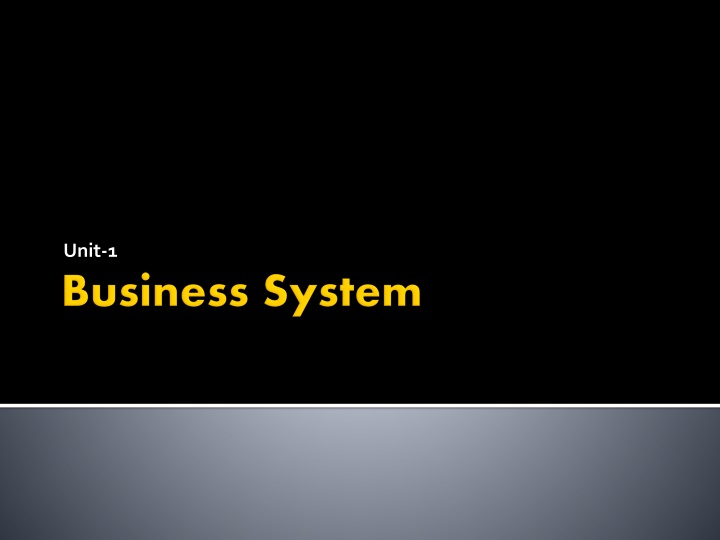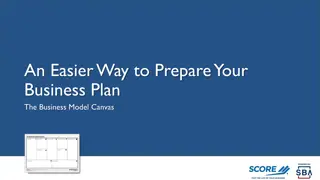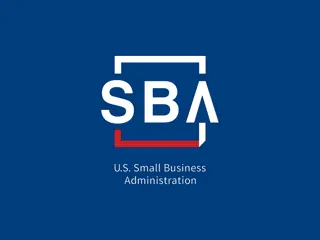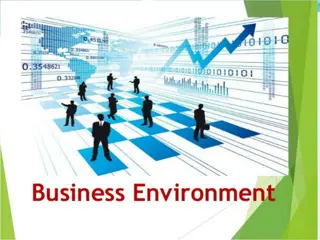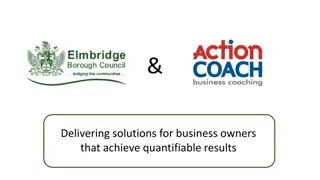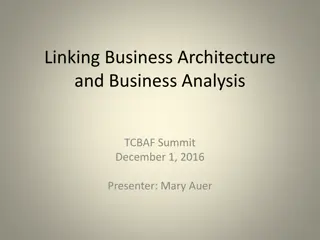Business Activities
Business involves a regular process of earning profit by satisfying consumers' needs through goods, services, or both. It necessitates a specific skill set to maximize profit and entails activities like manufacturing, reselling, and service provision. However, certain activities like distributing food for free or selling drugs do not fall under the business category. Explore the key characteristics of business such as its derived nature, economic focus, utility creation, capital requirements, risk factors, profit motive, consumer satisfaction, and social obligations. Learn about the types of business and the fundamental elements that define business operations.
Download Presentation

Please find below an Image/Link to download the presentation.
The content on the website is provided AS IS for your information and personal use only. It may not be sold, licensed, or shared on other websites without obtaining consent from the author.If you encounter any issues during the download, it is possible that the publisher has removed the file from their server.
You are allowed to download the files provided on this website for personal or commercial use, subject to the condition that they are used lawfully. All files are the property of their respective owners.
The content on the website is provided AS IS for your information and personal use only. It may not be sold, licensed, or shared on other websites without obtaining consent from the author.
E N D
Presentation Transcript
Definition: Business is a regular process of earning a profit by satisfying consumer s needs through the manufacturing of goods, reselling of products, providing services or carrying out all three together. It is an occupation which requires a particular set of skills and expertise to derive maximum profit out of it. Following activities cannot be considered as a business: Preparing food and distributing it in an orphanage; Selling of drugs; A mother teaches her child.
Business is derived from busy-ness, i.e. keeping oneself occupied with oneor the other work, but it is much more than just being busy. To have a better understanding of what a business is, we must go through the following points:
Regular Process: It is an activity which is performed repeatedly to generate profit. Economic Activity: The whole sole purpose is maximizing wealth. Creates Utility: The goods or service must be such that it creates form utility conversion of products in a consumable form, time utility making the goods and services available when needed; and place utility availability of goods or services wherever required, for the consumers. Capital Requirement: Any venture requires fund depending on the size and its type. Deals in Goods and Services: It is related to manufacturing and offering goods for sale or catering services.
Risk: All businesses have a risk factor or uncertainties of failure and loss. Profit Earning Motive: The initial motive of a businessman is making a profit out of his venture. Satisfaction of Consumer s Need: It is concerned with the fulfillment of the customer s demandsand needs. Involves Buyer and Seller: There are majorly two parties involved, the customer and the merchandise. Social Obligations: It has some social responsibilities, like creating job opportunities, dealing with licensed products, etc.
The previous instance has made it clear that business involves goods or services or both. A person has first to select the kind of business line he wants to operate. Thus, a business can be broadly classified as into the following types:
Service: An activity performed to earn money through customer satisfaction is known as a service. It involves professional skills and expertise. E.g. A professional teacher earns money by taking tuition class
Merchandising: Merchandising means procurement of goods from manufacturers or wholesalers, at a low price and selling it at a higher price to make a profit. It is also known as a retail business. E.g. A florist selling flowers
Manufacturing: Making profit through production or creation of goods from raw material in such a way that it derives some utility to the consumer is known as a manufacturing business. E.g. Processing of sugarcane in a sugar mill to get fine sugar
Hybrid: A business which involves all the three activities, i.e. manufacturing of goods, merchandising of products and delivering service falls under the hybrid category. E.g. A furniture seller, who manufactures furniture, buys old furniture and sells it at a higher price after repairing and also provides services for polishing old furniture.
Business is a self-employment opportunity for a person to become self-independent and master of his ideas. It is not only beneficial to the owner but also makes an impact on society. To get a detailed understanding of the importance of trading activities to the owner and the society, let us go through the following points:
Revenue Generation: It is the key to revenue generation for the business owner since it brings in profit and proves to be a source of income for the owner. Economic Growth: It is essential for the economic growth of a country since high revenue means higher tax collection. Improves Standard of Living: A country with more industrial units and companies experience a higher rate of employment and better living standards. Bulk Production: Manufacturing units involve large-scale production, which ultimately reduces the cost of production, and people get a continuous supply of goods at a reasonable price.
Innovation: It involves brainstorming and generation of new ideas which opens up the way for innovation and creativity. Generates Employment: It is a long-term process which requires the human resource to function correctly. Therefore, it creates job opportunities. Market Expansion: A good strategy and high customer satisfaction lead to a strong customer base aiming at market expansion.
Step 1: Know Yourself It is often necessary to assess yourself before you can assess the potential of your business idea. Do you know who will buy your product or service? What benefits does your product or service offer to them and how much would they be willing to pay? Step 2: Are you a Risk Taker? Starting a new business can be an exciting and challenging time, however, it can also be a period of uncertainty and risk. For some it can mean risking their life savings, secure employment and family security. Are you fully prepared for this?
Step 3: Market Research Market research is essential in helping you to identify your target market and getting to know your potential customers. Conducting market research will also help you to identify who your competitors are and how to compete effectively in a given market.Research is also effective in assessing demand for a new product or service. Step 4: Examine Your Business Requirements Consider the best location for the business Identify your basic equipment requirement and costs Will you need to employ more staff? Identify your Insurance requirements
Step 5: Calculate Investment Requirements Identify all start-up costs associated with the business Identify ways of financing your business venture Seek financial support and benefit from direct referral to Government Supports Become aware of all financial supports we offer Step 6: Developing your Marketing Strategy Marketing your enterprise is a fundamental aspect of starting up Research the most cost-effective methods of marketing your business Write your Marketing Plan
Step 7: Developing Your Sales Plan Having assessed your business idea, estimate your selling price How will you promote the enterprise? Who/where is your target market (local/national/international)? What channels of distribution will be used? Determine the break-even point Step 8: Decide on an appropriate legal business structure It is important to research the types of business ownership to help you make the best decisions for your business. You can choose whether you want a: Sole trader Partnership Limited Company
Step 9: Be aware of legal obligations that will affect your business Register your business name with the Companies Registration Office (CRO). You will need to understand your tax obligations and register as self-employed with your local revenue office. You will need to be aware of your statutory obligations such as trading licenses, planning permission, insurance, health & safety, patents Step 10: Write your Business Plan Business Planning is fundamental to success in business. It is the key to making things happen and reaching goals. A business plan can be used as an operating tool that will help you to make important decisions and manage your business effectively, the business plan also has a number of other uses.
